Apalachicola National Forest
- January 30, 2024
- 0 comment
Explore Apalachicola National Forest’s diverse habitats, enjoy outdoor activities, and experience Florida’s largest national forest. Apalachicola National Forest, spanning over half a million acres, is the state’s largest national forest, offering a rich tapestry of diverse habitats, from wetlands to pine flatwoods.
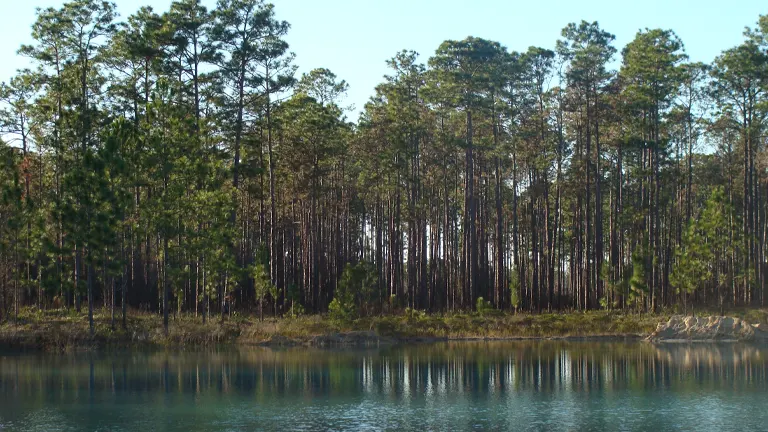
A paradise for outdoor activities like hiking, camping, and bird watching, this forest not only invites adventure but also plays a crucial role in conservation, safeguarding the region’s unique wildlife and ecosystems. Apalachicola stands as a vibrant testament to nature’s splendor and diversity.
Characterizing Features of Apalachicola National Forest
- Extensive Wetlands The Apalachicola National Forest is distinguished by its extensive wetlands, which are among the most productive ecosystems in the world. These wetlands are critical for water purification, flood control, and provide essential habitats for a diverse array of wildlife. They support a variety of life, from amphibians and fish to a multitude of bird species, making them a key area for ecological study and bird-watching enthusiasts.
- Pine Flatwoods A dominant feature of the forest is the Pine Flatwoods, an ecosystem characterized by a sparse understory and a canopy predominantly composed of longleaf and slash pines. This ecosystem is fire-adapted and depends on periodic burns to maintain its unique biodiversity. The Pine Flatwoods are crucial for numerous species, including the gopher tortoise, a keystone species, and the red-cockaded woodpecker, an endangered species that nests in mature pine trees.
- Coastal Plains The Coastal Plains of Apalachicola National Forest offer a stark contrast to its wetlands and pine forests. This area, with its unique mix of salt marshes and sandy beaches, is vital for the protection of coastal ecosystems. These plains support a variety of plant species adapted to saline conditions and act as crucial buffers against coastal erosion. The area is also a hotspot for migratory birds and serves as a critical nesting ground for several sea turtle species.
History of Apalachicola National Forest
Apalachicola National Forest was established in 1936, during a time when America was becoming more aware of the need to take care of its natural spaces. This was a period when the country was recovering from extensive deforestation, and there was a strong movement towards preserving and rejuvenating natural landscapes. The creation of the forest was part of President Franklin D. Roosevelt’s New Deal, a series of programs designed to provide jobs and recover from the Great Depression. The Civilian Conservation Corps, a key New Deal program, was instrumental in developing the forest. They planted trees, built roads, and set up areas for people to enjoy outdoor activities, laying the foundation for the forest as we know it today.
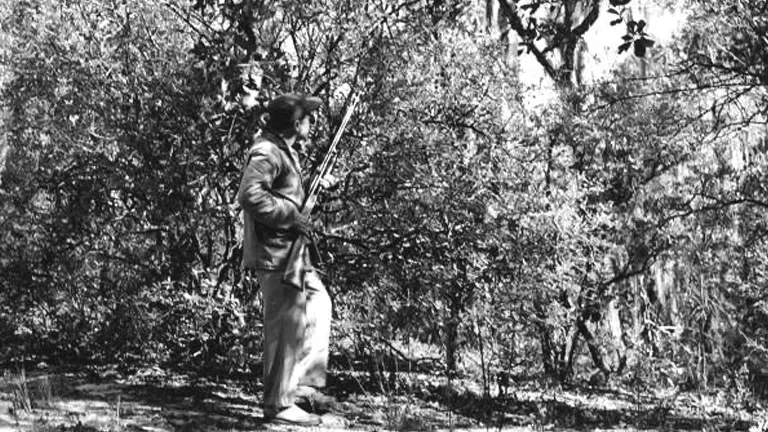
Over the years, the way Apalachicola National Forest has been managed has changed to reflect new understandings of how to best care for the environment. One significant change was in how the forest handles fires. In the early days, the focus was on putting out fires, but later, controlled burns were used as a tool to help maintain healthy ecosystems, especially in areas like the Pine Flatwoods. The forest has also become a place for scientific research, helping us learn more about how ecosystems work, the best ways to protect wildlife, and how to manage forests sustainably. Today, Apalachicola National Forest is not just a beautiful place to visit, but also a symbol of how our relationship with nature has grown and evolved.
Unique Ecosystem of Apalachicola National Forest
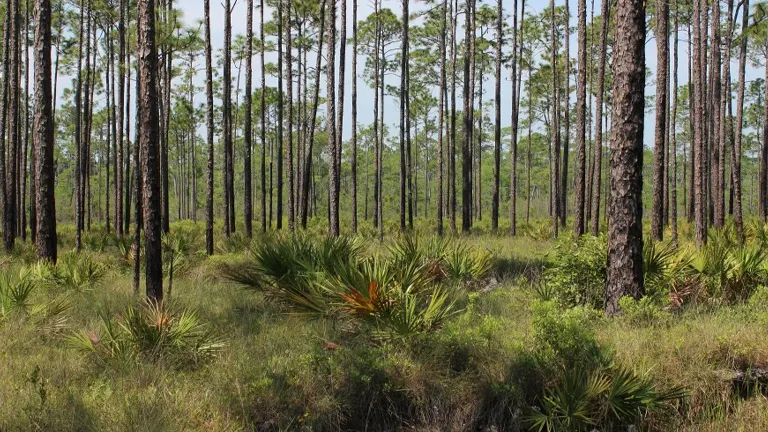
Apalachicola National Forest is home to a unique ecosystem that stands out for its rich biodiversity and variety of natural habitats. This forest features everything from dense swamps and marshes to dry, sandy pine flatwoods, each supporting different types of plants and animals. The wetlands are especially important, as they provide a habitat for a wide range of wildlife, including various bird species, and help in filtering and purifying water. The pine flatwoods, maintained by regular, controlled fires, are home to many unique plants and animals, including the endangered red-cockaded woodpecker. This diverse mix of environments makes Apalachicola a crucial area for conservation efforts and a living laboratory for studying how different ecosystems interact and sustain each other.
Location of Apalachicola National Forest
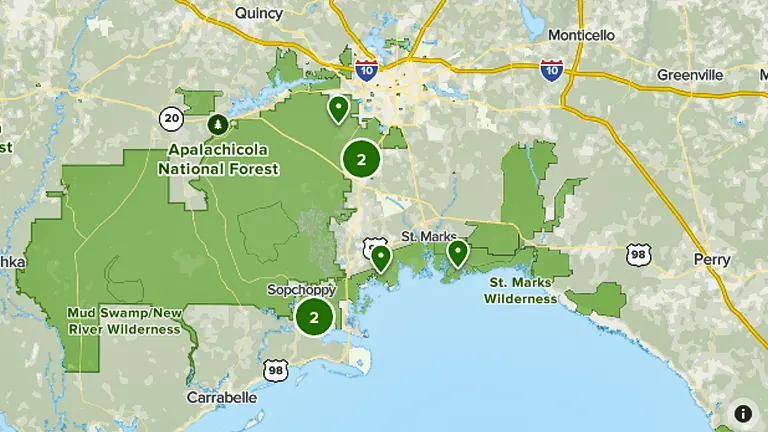
Apalachicola National Forest is located in the Florida Panhandle, southwest of Tallahassee, the state’s capital. This expansive natural area, covering over half a million acres, is easily accessible via major roads such as U.S. Highway 319 and State Road 65. Its proximity to Tallahassee makes it a convenient destination for both locals and tourists seeking an escape into nature. The forest’s location near the coast also adds to its ecological diversity, blending inland and coastal habitats.
Here’s a list of guides on how to reach Indiana Dunes State Park:
1. From Tallahassee:
- Take U.S. Highway 319 South for about 30 miles.
- Turn left onto State Road 65, which leads directly into the forest.
2. From Panama City:
- Drive north on U.S. Highway 231.
- Merge onto Interstate 10 West towards Pensacola.
- Take exit 174 for State Road 12 towards Greensboro.
- Follow State Road 12 to State Road 65, which enters the forest.
3. Using GPS Navigation:
- Enter the coordinates
30.1588° N, 84.7041° Winto your GPS device for the main entrance.
4. Public Transportation Options:
- While there are no direct public transportation routes to the forest, visitors can reach nearby towns like Tallahassee by bus or train and then rent a car.
5. Closest Airports:
- Tallahassee International Airport is the closest, about an hour’s drive from the forest.
- Rent a car at the airport and follow the directions from Tallahassee.
6. Biking Routes:
- For cycling enthusiasts, several bike-friendly roads lead to the forest. However, be prepared for long-distance cycling and varying road conditions.
7. From Coastal Areas:
- Visitors coming from coastal regions like Panama City can take U.S. Highway 98 east and then head north on State Road 65, which leads directly into the forest.
The Importance of Conservation and Recreation in Apalachicola National Forest
In Apalachicola National Forest, the intertwining of conservation and recreation forms the cornerstone of its management and appeal. This dual focus not only protects the forest’s diverse ecosystems, ranging from wetlands to pine flatwoods, but also ensures that these pristine environments remain accessible and enjoyable for public recreation. Conservation efforts, such as controlled burns and habitat restoration, maintain the health and biodiversity of the forest, supporting species like the endangered red-cockaded woodpecker.
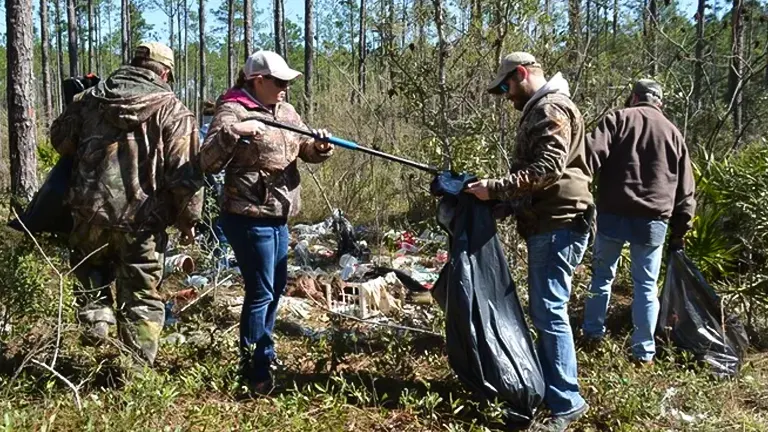
Simultaneously, these practices enable sustainable recreation, allowing visitors to engage in activities like hiking, bird watching, and camping without compromising the forest’s ecological integrity. Therefore, Apalachicola stands as a shining example of how environmental stewardship and recreational enjoyment can coexist harmoniously, showcasing the value of protecting natural spaces for both ecological health and human enrichment.
Diverse Vegetation and Plant Species in Apalachicola National Forest
- Longleaf Pine (Pinus palustris): Dominating the pine flatwoods, the longleaf pine is a key species in the forest. Its ecosystem supports a variety of wildlife and is maintained through regular fire cycles, which are essential for the growth and regeneration of these trees.
- Wiregrass (Aristida stricta): Often found alongside longleaf pines, wiregrass thrives in the sandy soils of the flatwoods. This plant is also adapted to survive and reproduce following fire events, making it integral to the forest’s fire-dependent ecology.
- Slash Pine (Pinus elliottii): Common in wetter areas of the forest, slash pine plays a crucial role in providing habitat for wildlife. It is distinguished by its long, slender needles and is often used in timber production.
- Saw Palmetto (Serenoa repens): A common understory plant, saw palmetto is recognizable by its fan-shaped leaves. It’s an important food source and cover for wildlife and is resilient to fire, often sprouting quickly after burns.
- Magnolia (Magnolia grandiflora): The Southern magnolia, with its large, fragrant white flowers, is a symbol of the South. These trees are found in the moister, shadier parts of the forest and add to the forest’s aesthetic and biodiversity.
- Carnivorous Plants: The forest’s wetlands are home to various carnivorous plants like the pitcher plant (Sarracenia) and sundew (Drosera). These species have adapted to the nutrient-poor, acidic soils by evolving to trap and digest insects.
- Cypress (Taxodium): Cypress trees, including the bald cypress (Taxodium distichum), are a key component of swamp ecosystems within the forest. Their unique root structures, known as cypress knees, protrude from the water, aiding in oxygen intake and stability.
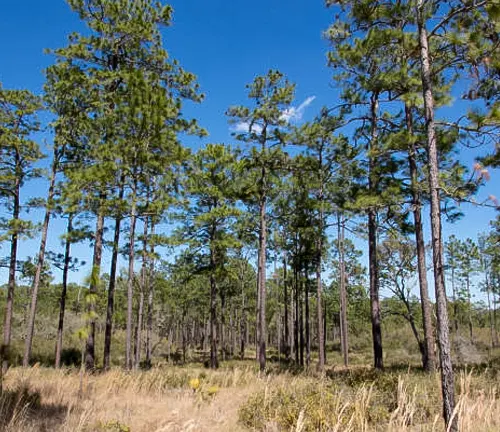
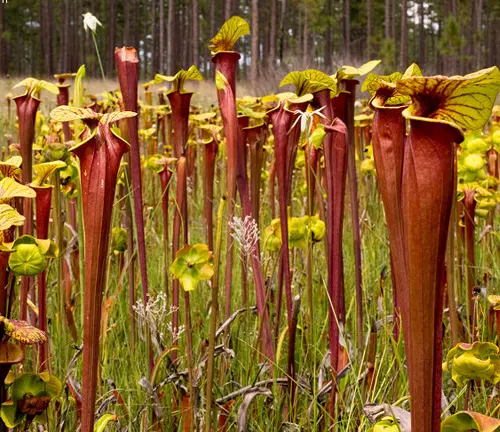
Fauna in Apalachicola National Forest
- Florida Panther (Puma concolor coryi): The Florida Panther, a subspecies of cougar, is a rare and emblematic species of the forest. These elusive big cats are a conservation priority due to their endangered status and serve as an indicator of the forest’s ecological health.
- American Alligator (Alligator mississippiensis): A keystone species in the forest’s wetland ecosystems, the American Alligator plays a crucial role in maintaining the ecological balance. Their presence benefits a multitude of other species by creating habitats through their nesting activities.
- Red-Cockaded Woodpecker (Dryobates borealis): This endangered bird is dependent on mature longleaf pine ecosystems, where it nests in cavities of living pine trees. Conservation efforts for these woodpeckers have been significant in the forest’s management.
- Gopher Tortoise (Gopherus polyphemus): The gopher tortoise, a keystone species, is renowned for its burrowing habits, which provide shelter for many other animals. Their burrows are vital microhabitats in the pine flatwoods and sandy soils of the forest.
- Bald Eagle (Haliaeetus leucocephalus): The national bird of the United States, bald eagles are often seen soaring over the forest. These majestic birds nest near water bodies, adding to the forest’s rich bird diversity.
- Eastern Diamondback Rattlesnake (Crotalus adamanteus): The largest rattlesnake species, the Eastern Diamondback, finds a suitable habitat in the dry, sandy areas of the forest. Their presence indicates a healthy, functioning ecosystem.
- Bobcat (Lynx rufus): Bobcats are adaptable and secretive predators that roam the forest. They play a role in controlling the population of rodents and other small mammals, maintaining ecological balance.
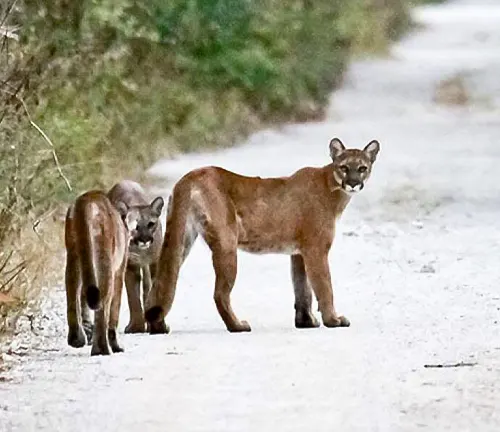

Different Attractions in Apalachicola National Forest
Leon Sinks Geological Area: At Leon Sinks, visitors can explore a world of sinkholes and hidden streams on foot. Trails wind through this special area, where signs explain how these holes and streams formed. It’s a great place to learn about the land and see something different.
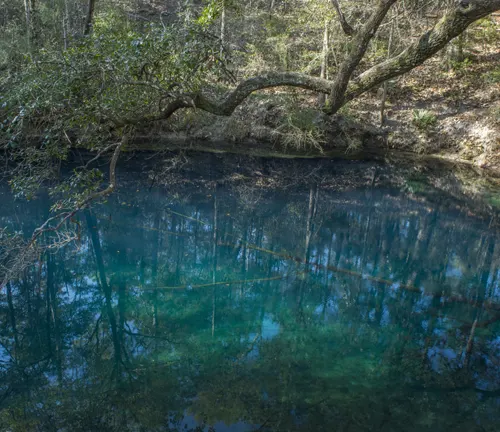
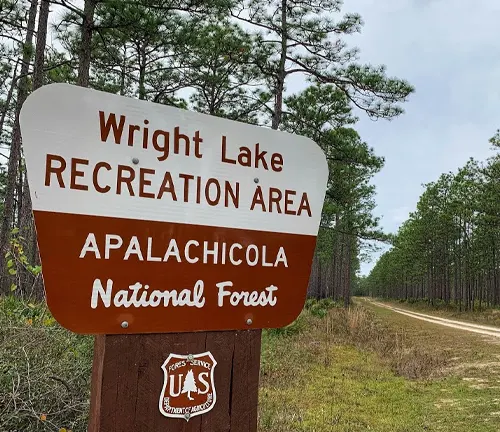
Wright Lake Recreation Area: Wright Lake is a peaceful spot perfect for families. Here, you can enjoy a day by the lake with picnics, swimming, or just relaxing. There are trails for a gentle walk and spots to stay overnight, making it a nice getaway in nature.
Bradwell Bay Wilderness: For those who like a challenge, Bradwell Bay Wilderness offers rugged hikes through untouched nature. It’s a wild area where you might see animals and enjoy the quiet, but it’s best for those who are experienced in hiking tougher trails.
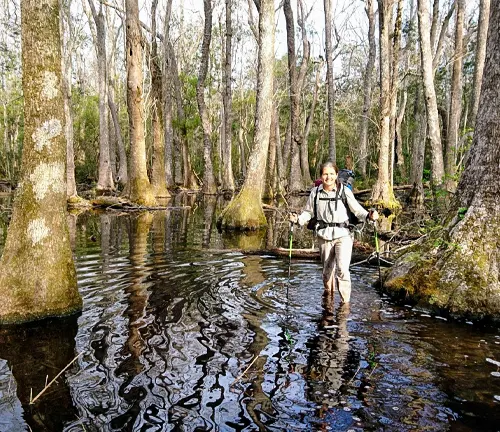
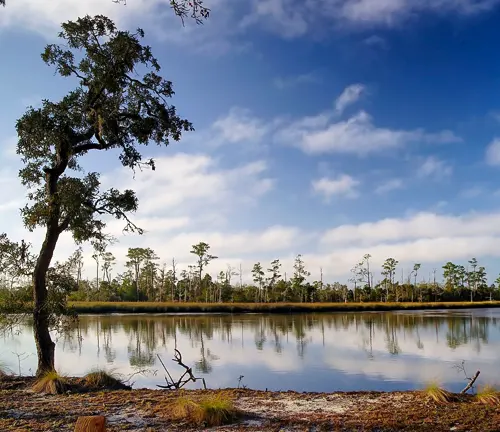
Ochlockonee River: The river is a calm place for canoeing, kayaking, or fishing, surrounded by beautiful trees and plants. It’s also a good spot for fishing and bird watching, with many kinds of fish and birds to see.
Recreational Activities in Apalachicola National Forest
- Hiking: Apalachicola National Forest is a hiker’s paradise, with trails ranging from easy walks to challenging treks. These trails take you through different landscapes like pine forests, wetlands, and open fields. It’s a great way to see the forest’s beauty up close, spot wildlife, and enjoy the fresh air.
- Camping: For those who love sleeping under the stars, the forest offers several camping spots. You can choose from developed campgrounds with facilities or more primitive areas for a back-to-nature experience. Camping here lets you wake up surrounded by nature’s sounds and sights.
- Fishing: The forest’s lakes and rivers are popular for fishing. Anglers can look forward to catching bass, catfish, and other freshwater fish. It’s a peaceful way to spend a day by the water, whether you’re an experienced angler or just trying it out.
- Canoeing and Kayaking: Paddling is a wonderful way to explore the waterways of Apalachicola. The rivers and lakes here are suited for both beginners and experienced paddlers. Canoeing or kayaking lets you see the forest from a different perspective and get close to water-based wildlife.
- Bird Watching: The forest is home to many bird species, making it a great spot for bird watching. Bring your binoculars and you might see rare birds like the red-cockaded woodpecker or bald eagles. It’s a relaxing activity that connects you with nature.
- Mountain Biking: Some trails in the forest are open for mountain biking. These trails offer a fun and exciting way to see large areas of the forest. Biking is perfect for those who want a bit of adventure and exercise during their visit.
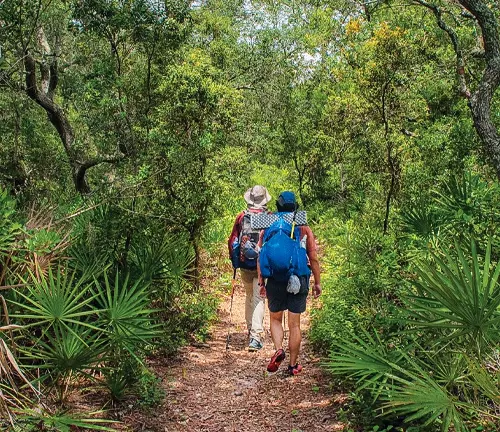
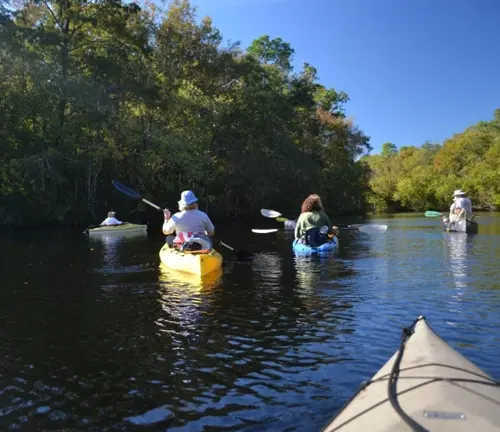
Different Facilities and Amenities in Apalachicola National Forest
- Campgrounds: The forest offers a variety of campgrounds, catering to different camping styles. There are developed campgrounds with amenities like restrooms, showers, and fire rings, ideal for families or those seeking comfort. For a more rugged experience, primitive campsites are also available, offering a basic but closer-to-nature stay.
- Picnic Areas: Scattered throughout the forest are numerous picnic areas, perfect for a family outing or a relaxing break. These areas usually have picnic tables and grills, making them ideal for a cookout or a simple meal surrounded by nature. Some spots also have playgrounds, making them great for visitors with children.
- Hiking Trails: Apalachicola National Forest boasts an extensive network of hiking trails, suited for all levels of hikers. These trails are well-marked and range from short, easy loops to longer, more challenging hikes. They offer a great way to explore the forest and get up close to its natural beauty.
- Boat Ramps and Canoe Launches: For those interested in exploring the forest’s waterways, there are several boat ramps and canoe launches. These facilities provide easy access to the rivers and lakes, making it convenient for boating, canoeing, and kayaking enthusiasts to enjoy the water.
- Visitor Centers: The visitor centers in the forest are hubs of information, where guests can learn about the area, its history, and wildlife. They often have educational exhibits, maps, and staff available to answer questions and help plan your visit.
- Restrooms and Comfort Stations: In various parts of the forest, there are restrooms and comfort stations available for visitors. These facilities are especially useful for day-trippers and campers, providing basic amenities to make the visit more comfortable.
Tips and Advice for Visiting Apalachicola National Forest
- Check Weather and Prepare Accordingly: Before your visit, check the local weather forecast. The forest can be quite warm and humid, especially in summer. Dress in light, breathable clothing and consider layers for cooler mornings and evenings. Don’t forget rain gear, as Florida weather can be unpredictable.
- Stay Hydrated and Pack Snacks: It’s important to stay hydrated, especially when hiking or engaging in outdoor activities. Bring plenty of water, as not all areas in the forest have easy access to drinking water. Also, pack some snacks or a picnic to keep your energy up throughout the day.
- Use Bug Repellent and Sun Protection: Insects, including mosquitoes and ticks, are common in the forest. Use insect repellent to protect yourself, and consider wearing long sleeves and pants to prevent bites. Also, apply sunscreen regularly to protect your skin from the sun, even on cloudy days.
- Respect Wildlife and Keep a Safe Distance: While wildlife sightings can be exciting, it’s important to respect the animals and their habitat. Keep a safe distance, do not feed wildlife, and avoid disturbing animals, especially during nesting or mating seasons.
- Stay on Designated Trails: For your safety and to protect the forest’s ecosystems, always stay on marked trails. Venturing off-trail can lead to getting lost and can damage sensitive habitats.
- Leave No Trace: Help preserve the beauty of Apalachicola by following Leave No Trace principles. Take all your trash with you, avoid picking plants or disturbing wildlife, and leave rocks, plants, and other natural objects as you find them.
- Know the Rules and Regulations: Familiarize yourself with the forest’s rules and regulations before your visit. This includes information on camping permits, fire regulations, and areas where pets are allowed.
Recommendation
Discover the natural splendor of Apalachicola National Forest. With its lush landscapes and diverse wildlife, it’s a perfect escape for nature lovers and adventurers alike. From tranquil hikes to exciting wildlife spotting, this Florida gem offers an unforgettable outdoor experience. Don’t miss the chance to explore this stunning part of the world!
Conclusion
In summary, Apalachicola National Forest stands as a remarkable testament to nature’s beauty and diversity. Its rich ecosystems, from the serene wetlands to the lush pine flatwoods, offer a sanctuary not just for an array of wildlife but also for those seeking solace or adventure in nature’s embrace. Whether you’re a seasoned hiker, a bird watcher, or simply in need of a tranquil retreat, this forest is a destination that promises and delivers a truly enriching experience. As a crucial conservation site and a haven for recreational activities, Apalachicola is undeniably a precious jewel in Florida’s natural landscape.
FAQs
- What’s the best time of year to visit Apalachicola National Forest?
The best time to visit is during the fall and spring when the weather is cooler and more comfortable for outdoor activities. Summers can be quite hot and humid. - Are there any camping facilities in the forest?
Yes, there are several camping options ranging from developed campgrounds with amenities to primitive sites for a more rustic experience. - Is fishing allowed in the forest?
Yes, fishing is allowed in many of the rivers and lakes within the forest. A valid Florida fishing license is required for anglers over the age of 16. - Can I bring my dog to the forest?
Dogs are welcome in the forest but must be kept on a leash at all times. Owners are responsible for cleaning up after their pets. - Are there designated trails for mountain biking?
Yes, there are specific trails designated for mountain biking. Check the forest map or contact the visitor center for more information on biking trails. - Do I need a permit for hiking or camping?
Hiking does not require a permit. However, some camping areas, especially primitive sites, may require a permit. It’s best to check with the forest service beforehand. - Are there guided tours available in the forest?
While the forest doesn’t typically offer guided tours, local tour companies and nature groups may organize guided trips. The visitor centers can provide more information. - What should I do if I encounter wildlife?
If you encounter wildlife, observe them from a distance. Do not feed or attempt to touch them. For your safety and the well-being of the wildlife, it’s important to respect their natural behavior.
Apalachicola National Forest is a natural jewel in Florida, offering a blend of ecological wonder, recreational fun, and tranquil beauty. It’s a place where nature’s bounty is on full display, inviting all to explore and cherish its pristine landscapes.


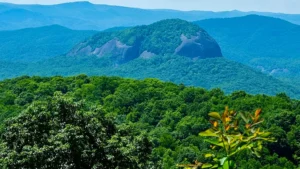
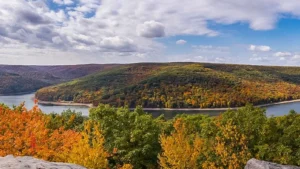
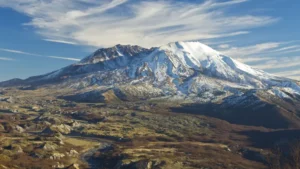
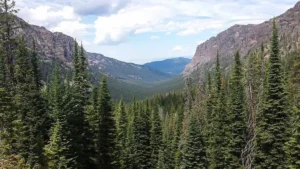
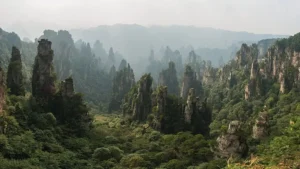
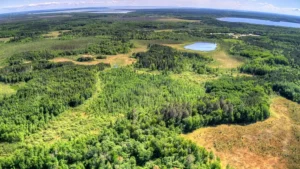
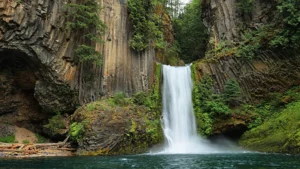


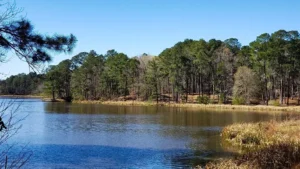
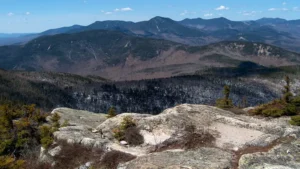
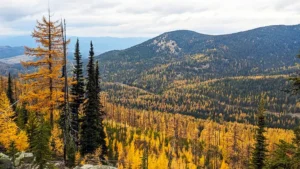
Leave your comment